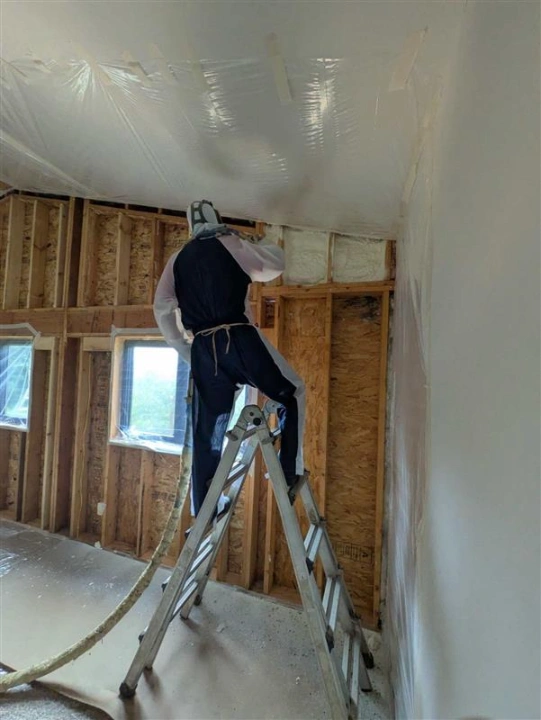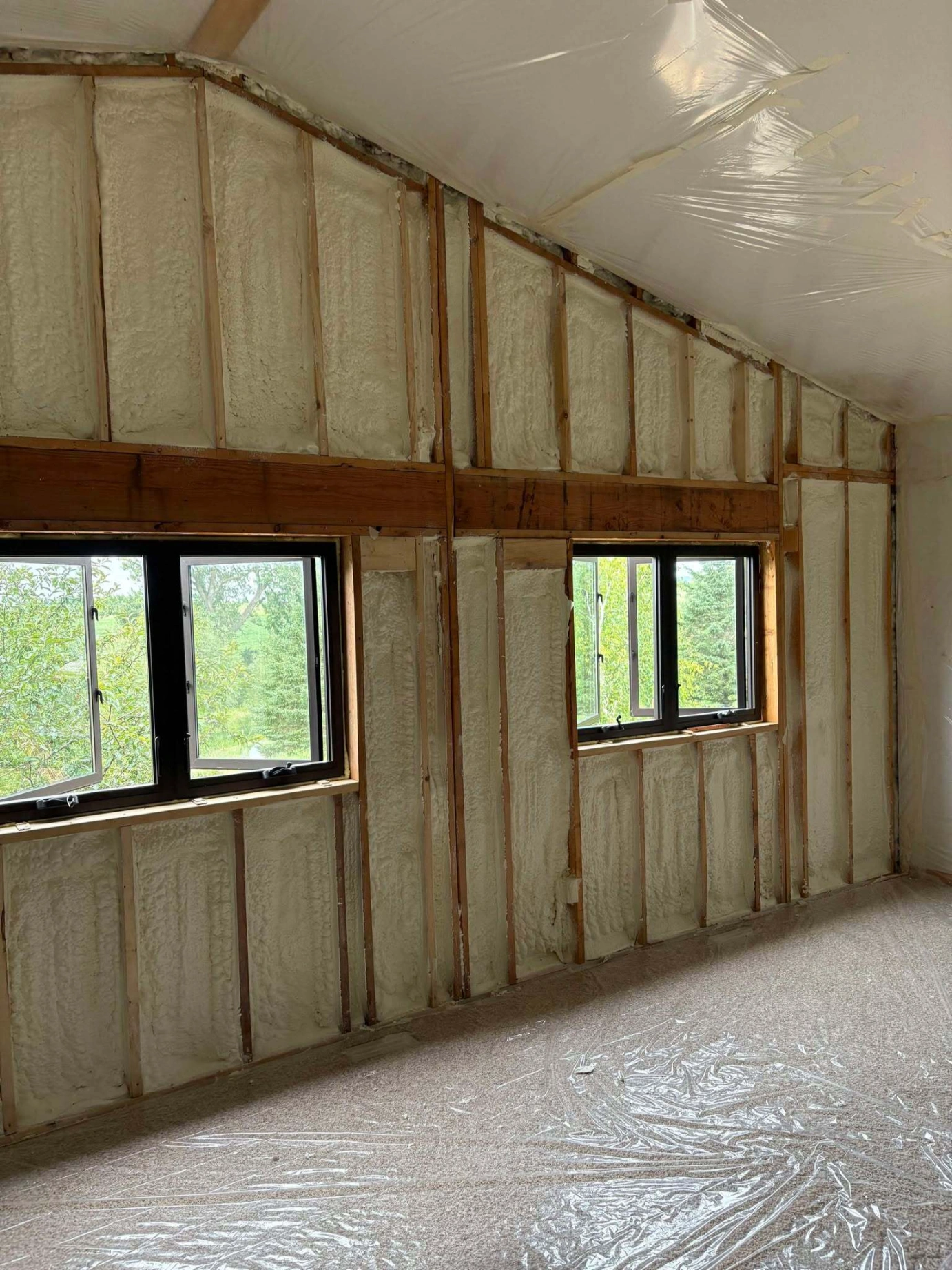Mankato winters often drop below 0°F, and summer highs frequently climb into the 80s. These sharp shifts in temperature stress any poorly insulated structure. When indoor comfort varies with the season and energy costs rise, insulation has likely reached its performance limits.
Insulation upgrades become necessary in Mankato, MN when frost lines extend deep in winter, attic spaces trap summer heat, or condensation forms on interior walls. These conditions affect residential, commercial, and agricultural buildings differently, but the indicators remain consistent: temperature imbalances, rising utility bills, and visible moisture damage.
This guide from Foam Worx Insulation breaks down climate-driven insulation concerns with practical experience from Southern Minnesota builds. The information below is based on field performance, not just theory, making it relevant for decision-making across property types.
Temperature Extremes in Mankato and Their Impact
Mankato has a humid continental climate. Winter brings wind chills that often drop well below -20°F, while summer humidity increases thermal loading. Insulation must buffer against both extremes to stabilize indoor conditions.
How Seasonal Shifts Affect Building Envelopes
- January to March: Deep freezes push frost into foundation levels, making uninsulated basements inefficient.
- June to August: Heat buildup in uninsulated attics spikes cooling costs and shortens roof lifespan.
- Spring/Fall Shoulder Seasons: Fluctuating temps promote condensation when insulation and vapor barriers underperform.
Indicators of Failing or Inadequate Insulation
| Condition | What It Signals | Relevant Season |
|---|---|---|
| Ice dams on roof edges | Poor attic insulation and air sealing | Winter |
| Uneven heating/cooling indoors | Heat loss or gain through poorly insulated walls | All year |
| Moisture on windows/walls | Warm interior air hitting cold exterior surfaces | Fall/Winter |
| Constant furnace/AC cycling | Building shell not holding temperature effectively | Winter/Summer |
| Cold floors over crawlspaces | Lack of subfloor insulation | Winter |
Bonus Tip
Use an infrared thermometer on interior walls in winter. A 10°F or greater temperature difference between center and edge often shows where insulation is missing or underperforming.
Mankato Weather Thresholds That Demand Action
| Weather Trigger | Required Insulation Response | Recommended Material |
|---|---|---|
| Sub-zero temperatures | Increase R-value in attics and wall cavities | Closed-cell spray foam |
| Wind chills below -15°F | Improve air sealing, especially around rim joists | Closed-cell spray foam |
| Dew point above 65°F | Add vapor control to prevent condensation | Intumescent paint + foam combo |
| 90°F+ days with attic overheating | Add radiant barrier and attic insulation | Blown-in insulation + foam hybrid |
Bonus Tip
Monitor HVAC runtime during extreme weather days. If your system operates more than 70% of the time, insulation or air sealing likely needs improvement.
Technical Data for Common Insulation Solutions in Mankato
| Insulation Type | R-Value per Inch | Air Barrier | Vapor Barrier | Moisture Resistance | Best Use Case |
|---|---|---|---|---|---|
| Closed-cell spray foam | 6.0 – 7.5 | Yes | Yes | High | Foundations, rim joists, walls |
| Open-cell spray foam | 3.5 – 3.8 | Yes | No | Moderate | Interior walls, soundproofing |
| Blown-in cellulose | 3.2 – 3.8 | No | No | Low | Attics, retrofit applications |
| Fiberglass batts | 2.9 – 3.8 | No | No | Low | New wall cavities, basic retrofits |
| Intumescent paint | N/A | No | Partial (coating) | Moderate | Fire protection, vapor barrier boost |
Sources:
- U.S. Department of Energy, Climate Zone Data (2024)
- Minnesota Department of Commerce, Energy Info Center (2024)

Things to Evaluate Before Insulation Changes
- Building age: Older homes often lack vapor barriers and may contain degraded insulation.
- Existing material: Some materials settle or degrade faster than others (e.g., cellulose, fiberglass).
- Moisture issues: Must be resolved before any insulation upgrade to prevent trapping moisture.
- HVAC performance: Constant cycling may stem from insulation gaps rather than system failure.
- Attic and crawlspace access: Limited space may restrict some insulation types.
Services Foam Worx Insulation Provides for Mankato Homes and Buildings
- Closed-Cell Spray Foam: High R-value with air and vapor sealing properties ideal for Minnesota winters.
- Blown-In Attic Insulation: Fills attic cavities efficiently with fast application and improved coverage.
- Residential Insulation: Solutions designed for older and newer homes in local conditions.
- Intumescent Paint: Fire-retardant coating with added vapor control in critical zones.
Questions to Ask Before Upgrading Insulation
Where is heat loss occurring?
Use thermal imaging to locate the primary leak points before deciding on materials or methods.
Can my structure support heavier insulation types?
Spray foam adds density; confirm structural integrity before application.
Will I need to remove old insulation first?
In many cases, yes. Especially when moisture damage or rodent activity is present.
Do I need a vapor barrier in addition to insulation?
Closed-cell foam often eliminates the need, but in humid conditions, added protection may be required.
Summary and Final Considerations
Mankato’s climate puts heavy demands on building envelopes. When insulation fails to block cold infiltration or trap cooled air in summer, building performance and comfort suffer. Pay attention to frost penetration, uneven room temperatures, and attic heat accumulation as early signs. Evaluate existing conditions thoroughly before selecting insulation methods.
Recently, Foam Worx Insulation expanded its closed-cell spray foam services to meet the rising winter insulation demand across Southern Minnesota, helping property owners stay energy-efficient through the region’s harshest months.
Contact Foam Worx Insulation for More Information
For expert evaluation based on real field conditions, contact Foam Worx Insulation at (507) 407-0678 or email [email protected]. Whether the structure is residential, agricultural, or commercial, Foam Worx Insulation applies building science expertise to real-world Minnesota weather challenges.
Long-Term Questions About Building Insulation
How long does closed-cell spray foam last?
Closed-cell foam can last over 30 years if applied correctly and kept dry.
Can insulation be applied year-round in Mankato?
Yes, though extreme cold can delay spray foam curing unless additives are used.
Will upgrading insulation affect my HVAC sizing?
Yes. Improved insulation often reduces the load, and oversized systems may short-cycle.
How can I check if my attic is underinsulated?
If the attic joists are visible or snow melts unevenly from the roof, insulation is likely insufficient.
Does better insulation increase property value?
Yes. Energy-efficient improvements are a top feature buyers consider in the Mankato housing market.




